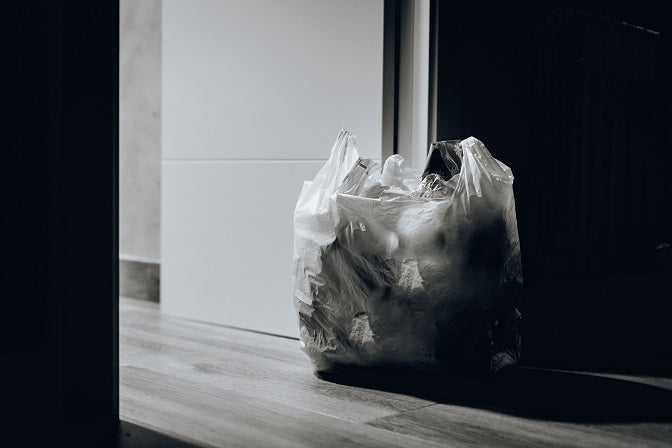
Soft plastics are difficult to avoid. Those sneaky suckers worm their way into our homes, regularly. If you visit the butcher, your local deli, or buy pre-packaged foods, you’re sure to come home with a wad of plastic in your shopping. And, while we’ve been able to recycle soft plastics at Coles and Woolworths stores, for several years, how many of us are doing it? And doing it correctly, I might add. As worrying as it is that so much plastic is still sent to landfill, there are positive things we can do to remedy the issue.
Soft plastics are difficult to avoid.
Those sneaky suckers worm their way into our homes, regularly.
If you visit the butcher, your local deli, or buy pre-packaged foods, you’re sure to come home with a wad of plastic in your shopping.
And, while we’ve been able to recycle soft plastics at Coles and Woolworths stores, for several years, how many of us are doing it? And doing it correctly, I might add.
The 2016 Australian Waste Report found that each Aussie produces an average of 17 kilos of plastic waste, annually. It’s also estimated that twenty percent of recyclable plastic ends up in the household waste bin.
Further, in a 2018 survey of 180 councils, produced by Planet Ark, 46% of councils said their number one problem was soft plastics, mistakenly placed in kerbside recycling bins.
This was closely followed by households disposing of their recycling, inside a soft plastic bag. D’oh! (Face palm emoji)
You have to feel for the tortured souls, who must sift through our half-cocked attempts at recycling, fishing out troublesome pieces of soft plastic and bottle lids, with the potential to jam and damage sorting machines.
There exists so much confusion over what can be recycled, where, and only the true greenies among us are sorting and drying their plastics, and marching them down to the supermarket, despite our busy lives.
Compounding the issue are the soft plastics which can’t be recycled. Australia’s major collector, REDcycle, announced last month, that they would no longer accept cling wrap in their bins, dooming a major source of household plastic to landfill.
Did your plastic bags contain meat? They aren’t fit for REDcycle bins either. And that’s fair enough, considering this game-changing company is too busy saving the world, to deal with mouldy plastic.
Have you rinsed your soft plastics, to discard of food remnants? You’ll need to place them somewhere to dry; again, due to mould. It’s a good thing I have a double sink at home, because one side is a permanent drying station, housing upside-down recyclables.
As worrying as it is that so much plastic is still sent to landfill, there are positive things we can do to remedy the issue:
#1 Educate yourself and others about recycling
Not sure what goes where? There are loads of resources out there to set you on the righteous path.
REDcycle feature a printable PDF on their website, detailing which soft plastics they accept, found here:
https://www.redcycle.net.au/wp-content/uploads/2017/05/REDcycle-Poster-2017_Final-1.pdf
Your local council website is the best source of information, regarding kerbside recycling, but an infographic, like the one below, from Bundaberg Council, can be a helpful visual cue, reminding us all to recycle properly:
http://www.bundaberg.qld.gov.au/services/waste-recycling/recycling-dos_donts
Cracked the recycling code and keen to spread the good word? Print out the above downloads (on recycled paper, of course!) and place them in the kitchen of your home, school or workplace, and near recycling bins, seeking permission where necessary.
#2 Simplify soft plastic recycling
Want to motivate people to recycle soft plastics? Make it easy for them.
Many of us are time poor, busy, or just plain lazy (we all have our moments). In addition to providing visual recycling cues, grab some old cardboard boxes, label them with ‘SOFT PLASTIC RECYCLING’, in big, bold letters, and place in high-traffic areas, like kitchens and meeting rooms.
If your kids want to get involved, they might ask their teacher, or principal, for permission to set-up collection points around their school, and collaborate with a group of friends to help run the boxes to the supermarket.
The easier we make it for people to recycle soft plastics, the less likely they’ll be to put it in their CBF file. It’s that simple.
#3 Eliminate soft plastics from your life, when you have an alternative
A huge game changer for me was when I started shopping at bulk food stores and taking my own containers and jars to fill. I instantly noticed a huge reduction in the amount soft plastic waste growing in the collection box under my sink. But I appreciate it's not always possible for everyone to shop at bulk food stores.
With innovative, new products popping up, every day, it’s now laughably easy to send plastic packing.
And, I know, it’s rather unglamourous to get paid and go splurging on plastic alternatives, not shoes, but it will save you money in the long term.
Think of all those rolls of cling wrap you’ll never buy and the awful carcinogens that will never leach into your food. Delish!
Choose from beeswax wraps or silicone covers, to replace cling wrap.
Opt for reusable silicone pouches and fill them with homemade, or bulk-bought food, instead of buying sandwich bags, or overpriced, pre-packaged foods in squeeze-able plastic (goodness knows how long ago the food was made, or what was done to preserve it!)
Finally, BYO compostable bags to the supermarket, for meat and seafood, placing in the green bin or, on your compost heap, once empty.
Once you commit to recycling and take a few, simple steps, it’s not as hard, or confusing, as it seems.
We’d love to hear about your efforts to recycle soft plastics. Have you implemented a recycling program, or zero waste initiative, in your home, school, or workplace?